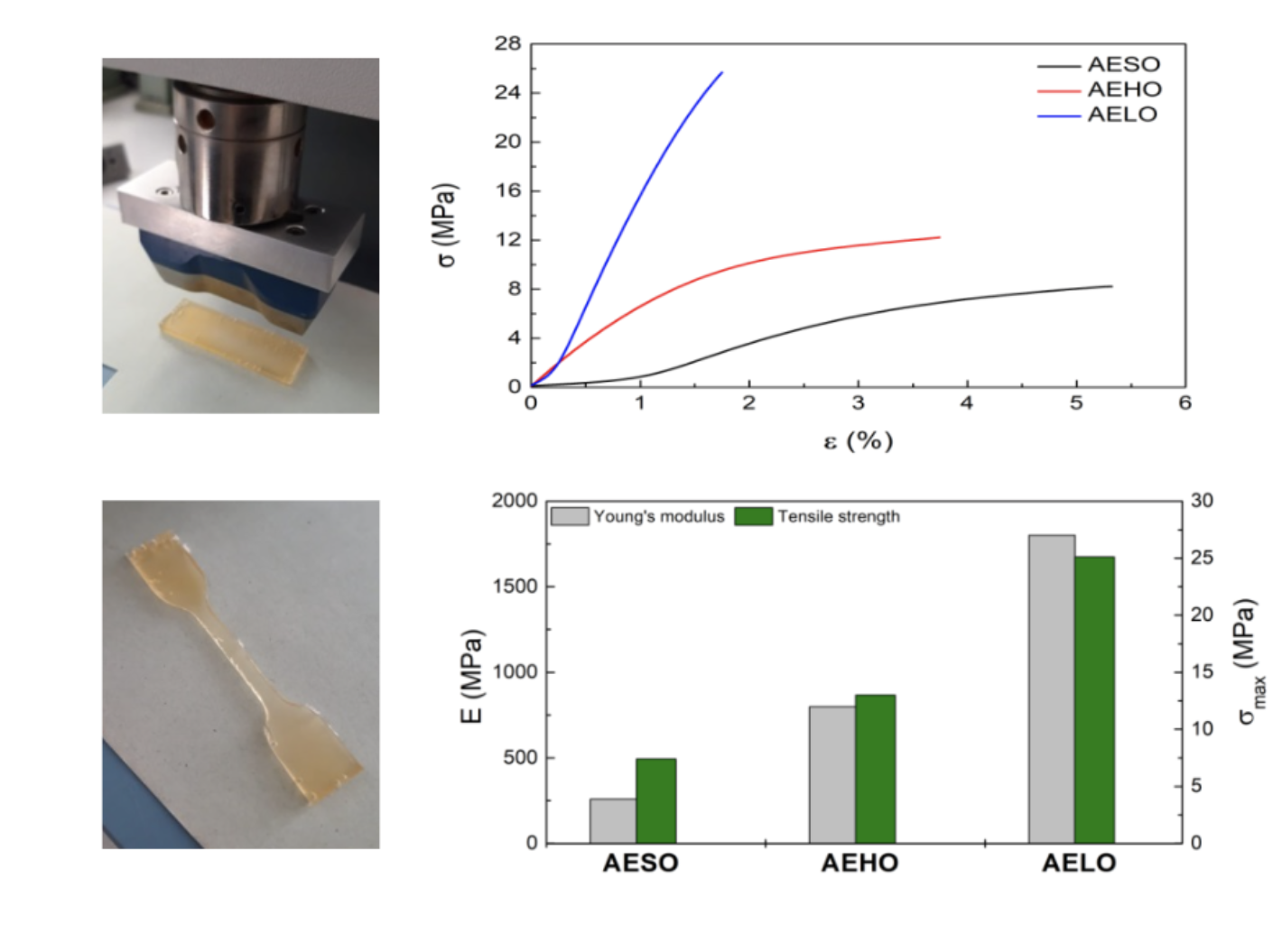Styrene-free thermosetting resins from vegetable oils
Fabio Bertini, Adriano Vignali, Nicoletta Ravasio, Federica Zaccheria [CNR Istituto di Scienze e Tecnologie Chimiche “G. Natta”, Milano, Italy]

Research and application of biopolymers is an ever increasing field [1] due to both environmental and socio-economical reasons. Among the pursued ways, the use of vegetable oils as starting materials is certainly a convenient one [2]. They can be used as reagents for the preparation of traditional monomers or otherwise used as themselves via different kind of functionalisation reactions. In particular the exploitation of oils as building blocks for the preparation of bio-materials offers the great opportunity to tap into a pool of varied monomers in terms of double bonds availability that is the starting point for the preparation of thermosetting resins [3]. In our experience this was found to be the case when using soybean, hempseed and linseed oil, that present a different composition in terms of fatty acid profile, as shown in the following table.

All of them are highly unsaturated oils and give the chance to obtain highly cross-linked materials due to the significant amount of double bonds that via epoxidation can be properly functionalised depending on the desired final resin.
Our strategy was based on the preparation of acrylic resins starting from these sources by curing the fatty based monomer in the presence of terpenes of different nature as the co-monomers. The materials obtained can be shaped upon needs and present mechanical properties that depend on the unsaturation degree of the starting oil. As an example in Figure 1 is shown the series of homopolymers obtained with acrylated soybean, linseed and hempseed oil.

Figure 1 - Mechanical properties of homopolymers AESO (acrylated epoxidized soybean oil), AEHO (acrylated epoxidized hemp oil) and AELO (acrylated epoxidized linseed oil)
The comparison with a resin prepared with acrylated soybean oil and styrene shows that it is possible to obtain mechanical strength even superior by using linseed oil based resins, thus showing that the proper choice of the oil and of the co-monomer allows one to tune the properties and the properties of the final material.
Performances of this kind of resins can be also improved by designing composite materials with fibers others than the traditionally used carbon or glass ones, such as hemp or flax fibers. In Figure 2 a picture of a seven layered composite laminate obtained by impregnating AEHO with limonene as the co-monomer and hemp fibers is reported. SEM analysis clearly shows that complete adhesion of the resin to the fibers is observed, even without any previous chemical compatibilisation treatment.

Figure 2. Composite material obtained from hemp oil thermosetting resin and reinforcing hemp fibers.
The present research puts in light the great potential of oils and natural fibers for the design of a range of materials with properties that can be modulated according to the composition of the starting fat and of the terpenic co-monomer. This allows one to design and prepare resins that can be used in a wide variety of applications, ranging from the automotive or marine material industry to the interior design.
- A. Gandini, T. M. Lacerda, A. J. F. Carvalho, E. Trovatti, Chem. Rev., 2016, 116, 1637-1669; Y. Zhu, C. Romain, C. K. Williams, Nature, 2016, 540(7633) 354-362
- E. A. Baroncini, K. Y., Santosh, G. R. Palmese, J. F. III Stanzione, J. Appl. Polymer Sci. 2016, 133(45)
- C. Di Mauro, S. Malburet, A Genua, A. Graillot, A. Mija, Biomacromolecules, 2020, 21, 3923-3935